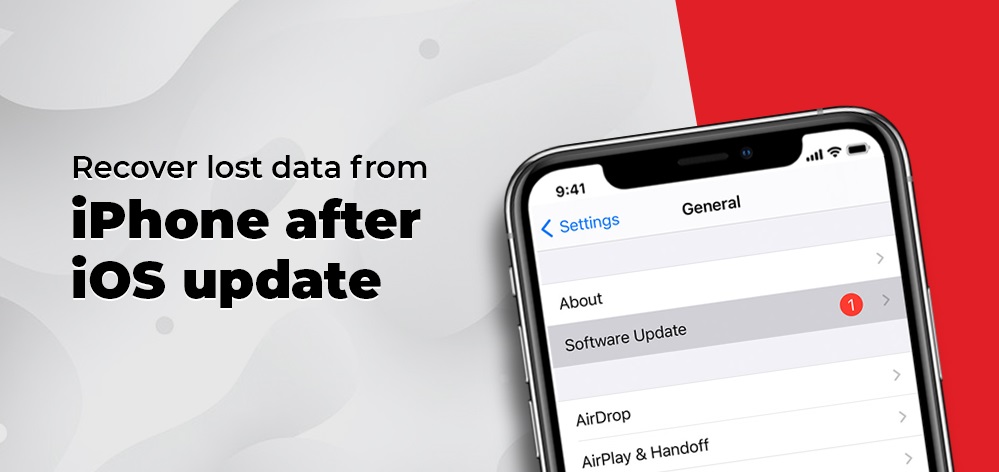
Installing the latest iOS update on your iPhone is helpful in multiple ways. It typically brings new features, improves your device’s performance, and enhances its security. However, sometimes these update processes may fail and you may encounter data loss on your iPhone after a failed iOS update. In such cases, you must know how to restore iPhone data after a failed iOS update and minimize the chance of permanent data loss.
This guide will walk you through various iPhone data recovery methods to restore your lost data after a failed iOS update, including built-in options like iCloud and iTunes/Finder backups and third-party iPhone data recovery software tools. So, let’s get started!
Common Reasons for iOS Update Failure
Before you proceed with methods to recover iPhone data after an iOS update, it is important to understand why an iOS update may fail. The most common reasons include:
- Insufficient storage space: iOS updates often require significant storage, and if your iPhone doesn’t have enough free space, the update may halt midway.
- Battery issues: If your iPhone does not have sufficient battery or there’s a power interruption during the update, the process could fail.
- Software bugs: Sometimes, there may be bugs or glitches in the current iOS version, which can cause the update to fail.
- Poor internet connection: A stable Wi-Fi connection is required for downloading and installing updates. Any disconnection can cause a failed update.
- Compatibility issues: Occasionally, older iPhones may struggle to update to newer iOS versions, especially if the device’s hardware is outdated.
When the iOS update process fails or halts, the iPhone can become stuck on the Apple logo, restart endlessly, or enter recovery mode, potentially jeopardizing your personal data. In such cases, it is important to immediately apply adequate iPhone data recovery methods to get your deleted data back. Also, avoid saving new data on your iPhone as this may overwrite your deleted data, making recovery quite complex.
How do I Restore iPhone Data After a Failed iOS Update?
Go through the iPhone data recovery methods mentioned in this part of the blog to restore your iPhone data quickly:
Method 01: Use iCloud Backup to Restore Lost Data on iPhone
Let’s start with the simplest approach first. If you sync your iPhone to iCloud backup, you can easily use it to restore lost or deleted data. You can restore your lost data such as photos, contacts, messages, etc. if an update fails using iCloud backup. All you have to do is:
- Firstly, you need to verify that your iPhone was backed up to iCloud. You can check this on another device (like an iPad or a Mac) by logging into iCloud and navigating to the “Backups” section.
- Now, delete all contents of your iPhone. For this, launch Settings, go to General > Reset > Erase All Content and Settings.
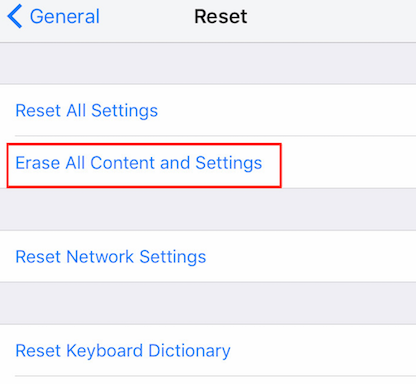
- After resetting your iPhone, go through the on-screen instructions and click the “Restore from iCloud Backup” option from the “Apps & Data” screen.
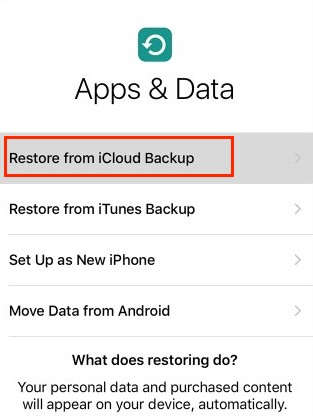
- Sign in using your iCloud ID. Then, click “Choose backup” and choose the most recent backup available.
- Lastly, click “Restore” and wait till the restoration process is completed.
Method 02: Restore Data via iTunes or Finder Backup
Another backup alternative that you can use to recover iPhone data after an iOS update is via iTunes or Finder. If you frequently back up your iPhone to a computer, try using either iTunes (on Windows or older macOS versions) or Finder (on macOS Catalina or later) to restore your data after an iOS update failure. For this:
- Connect your iPhone to the computer containing the backup using a lightning cable.
- Launch iTunes if you’re using Windows or macOS Mojave and earlier. On macOS Catalina or later, open Finder.
- Now, locate your iPhone in the sidebar or device list of your Finder or iTunes screen.
- Once your iPhone is detected, click the “Restore Backup” button and select a backup file (choose the latest one) that you need to restore.
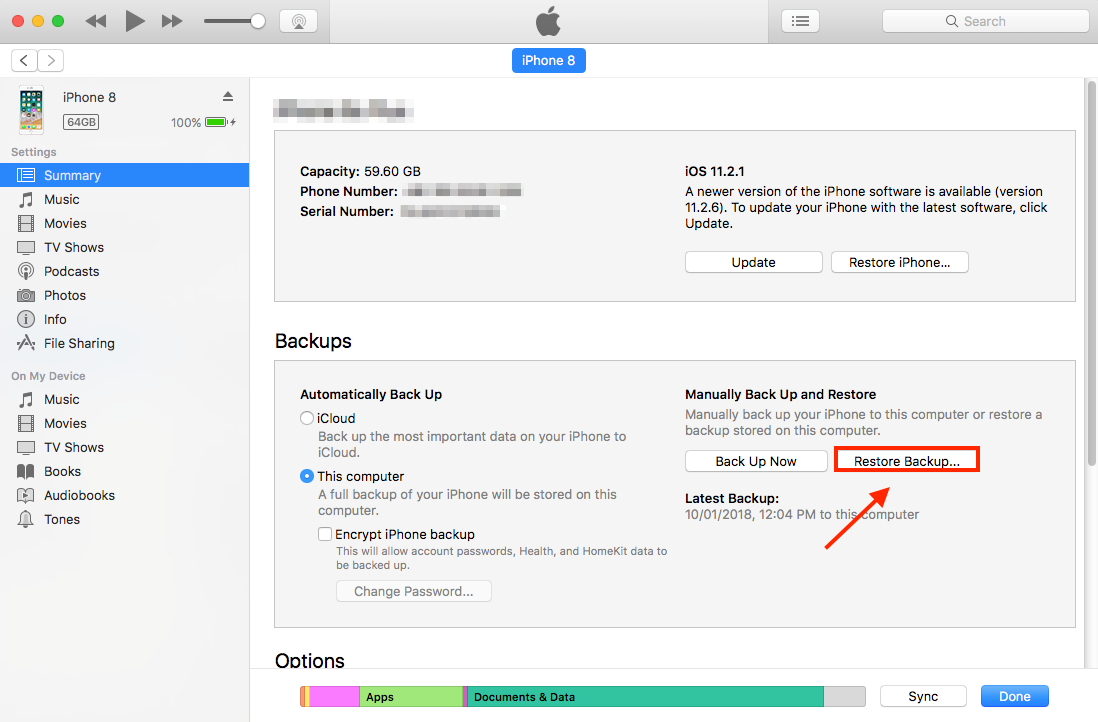
- After selecting it, click Restore from the pop-up window and wait till the restoration process is completed.
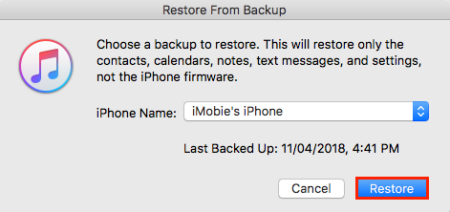
Method 03: Recover Lost Data Using iPhone Data Recovery Software
If iCloud or iTunes/Finder backups are unavailable or incomplete to restore your iPhone data after a failed iOS update, iPhone data recovery software can be helpful. You can use applications like Stellar Data Recovery for iPhone, which are designed especially for recovering data from an iPhone. The software can recover data lost or deleted due to accidental deletion, formatting, system errors, virus attacks, or any other reason.
- The all-in-one Stellar Data Recovery for iPhone tool supports recovery of deleted data of multiple types, including photos, videos, texts, contacts, etc.
- Compatible with iPhone Series 15/14/13/12/11/X and below.
- The Deep Scan option of the software performs a comprehensive scan of the iOS device and iTunes backup to restore every bit of your lost data.
- 100% safe and secure software; free from viruses and malware.
- Allows you to preview the recoverable files before saving them on your device.
Here’s how to restore iPhone data after a failed iOS update using the Stellar Data Recovery for iPhone software:
Step 1: Download and install the Stellar Data Recovery for iPhone software on your Windows/Mac device. Also, connect the iPhone from where your data is lost to that device.
Step 2: Launch the software and from the left navigation pane of the homepage, select Recover from iPhone and choose the type of data you need to restore. Click Next to continue.
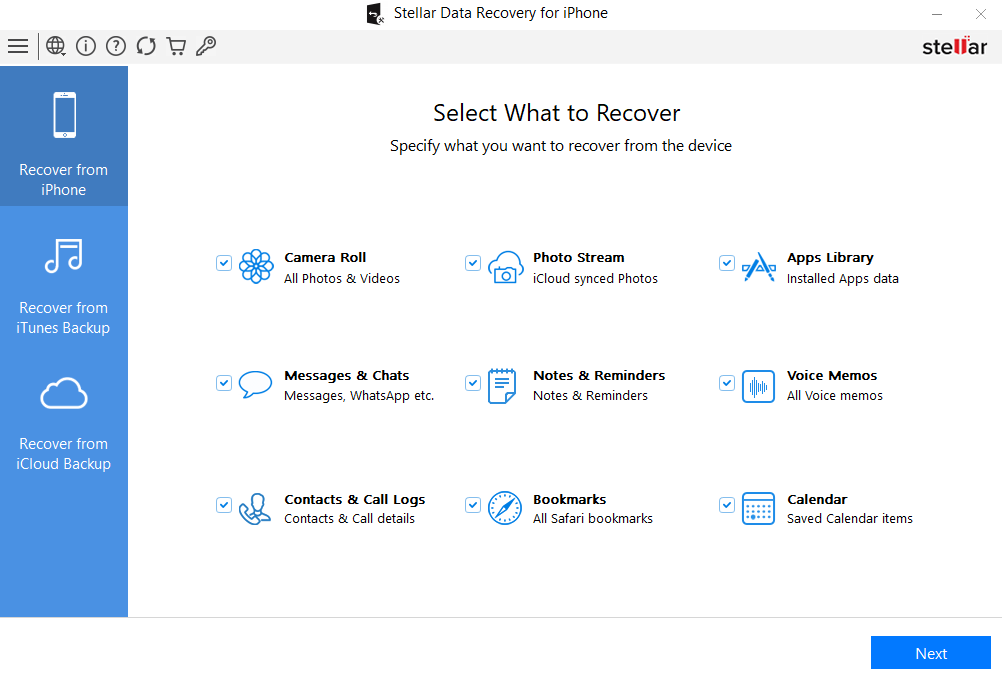
Step 3: Wait till the scanning process is completed. Once done, preview the recoverable files and choose the ones you need to restore.
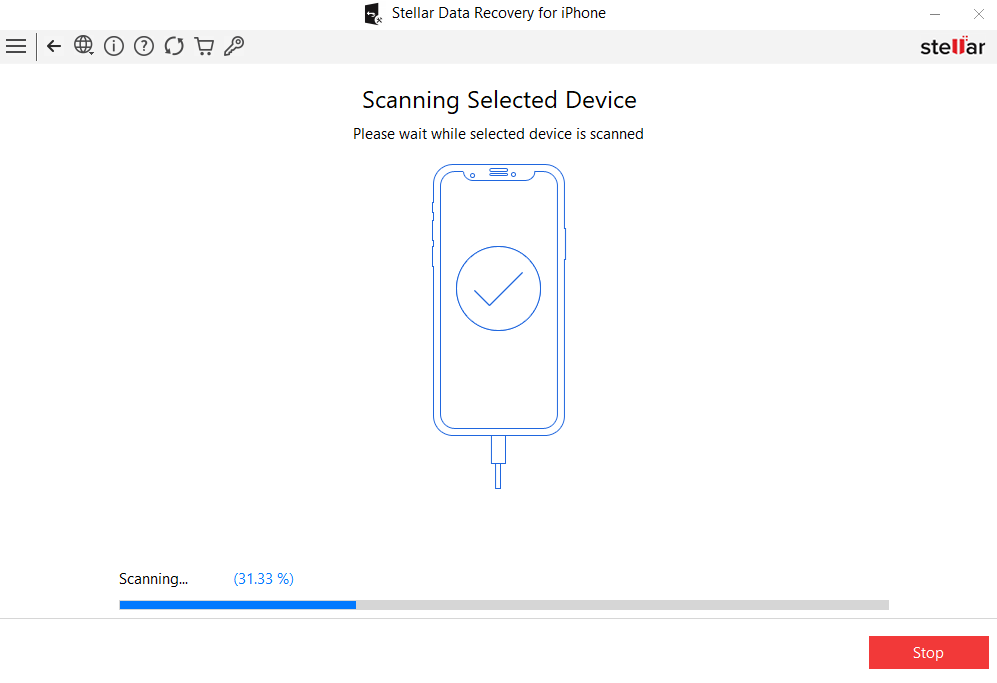
Step 4: Click the Save button to save selected files at the desired location on your device.
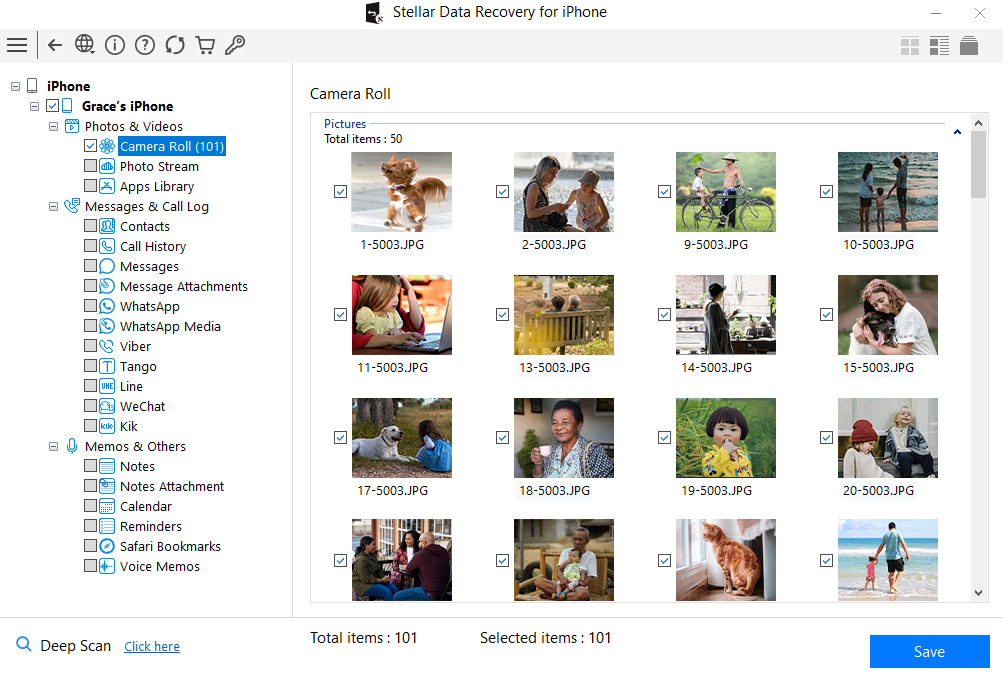
Preventive Tips For Smooth iOS Update on iPhones
Losing data on your iPhone after installing the latest iOS updates can be a distressful experience. Though the above-mentioned iPhone data recovery methods are effective in quick and easy recovery of your lost data, but it is important to avoid such instances. Here are some additional tips that you can consider to have smooth iOS update process:
- Backup Your iPhone: Use iCloud or iTunes/Finder to back up all your data before updating to avoid any data loss.
- Ensure Enough Free Storage: Check your storage in Settings > General > iPhone Storage. Free up space by deleting unused apps or large files.
- Update Your Apps: Ensure your apps are updated to the latest versions, as some may not work properly with the new iOS.
- Disable Background Apps: Close all running apps to minimize the chances of an update getting stuck due to background processes.
- Check iPhone Compatibility: Verify that your iPhone model supports the latest iOS version in Settings > General > Software Update.
Wrapping Up
Hope the above-mentioned iPhone data recovery methods help you learn how to restore iPhone data after a failed iOS update. Methods such as iCloud and iTunes/Finder backups are reliable, while third-party iPhone data recovery software offers more advanced recovery options for difficult situations. Moreover, you can consider preventive tips like maintaining regular backups, turning off background apps, etc. to minimize the risk of data loss on your iPhone during the iOS update process.

